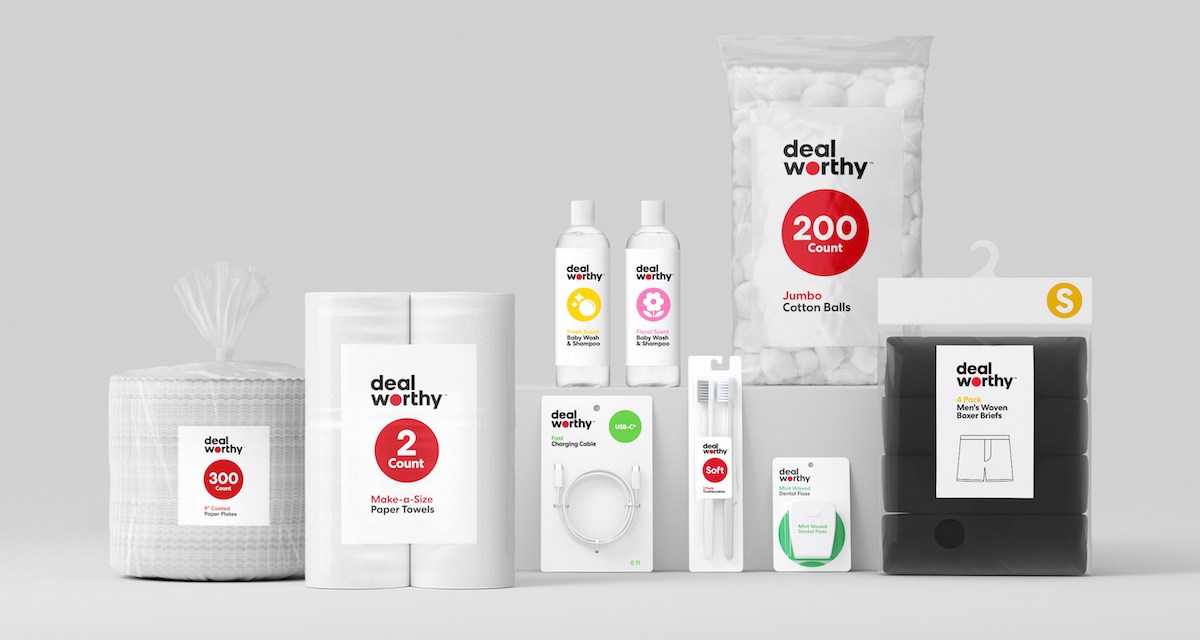Why retailers like Target are rolling out more value-based lines

Retailers are racing to one-up their competition by lowering the prices of their private-label products.
Last month, Target launched a new private label called Dealworthy that includes 400 products across home, apparel, accessories and electronics. Most items are under $10, with some for less than $1. Meanwhile, kids’ clothing company Carter’s has a new pricing program called Everyday Value that offers low prices on more than 500 items. Even dollar stores are funneling more resources into product expansion. In January, Dollar General debuted a new line of $3 to $8 fragrances called Club92 in partnership with Slatkin + Co.
Although inflation has cooled since recent highs, prices of goods are still up slightly, affecting how, when and where consumers shop. According to the latest U.S. government data, overall consumer prices grew 0.4% from January to February, though the price of food remained unchanged. Shoppers remain under pressure, and 55% have switched to buying less-expensive options, according to a 2023 survey of more than 8,000 people by SMARTeam CPG Consulting. Retailers know that shoppers are hesitant to hand over lots of cash, and they’re investing more in their lower-priced selections as a result.
For the past couple of years, many shoppers have increasingly turned to private brands due to their cheaper price tags. In fact, private-label brands enjoyed a record year in 2023, the Private Label Manufacturers Association said. To keep up, retailers including Macy’s and Walmart have allocated resources to build up that part of their businesses.
However, as is the case with Target’s Up & Up, many of these private brands don’t offer ultra-low prices, Ryan Lynch, managing partner at the brand agency Beardwood & Co, told Modern Retail. Instead, they’re typically mid-tier brands. Now, retailers are making more versions of their private labels or lowering the price of their existing private-label goods to cater to more demographics of shoppers.
“Retailers are tiering their own brands the same way that they used to buy in national brands and price-tier them within a range,” Lynch said. “They’re doing the same thing, but they’re doing it themselves as opposed to allowing that shelf space… People are very used to a ‘good, better, best’ strategy. And so, retailers are filling the niche that national brands were delivering and giving people the choices they want from brands they trust.”
It’s not enough for a retailer to introduce a lower-priced line though, sources told Modern Retail. Consumers see value in terms of price and quality together, Gerry Joyce, vp practice lead of retail at InMarket, said. According to Joyce, retailers need to appeal to both qualities. “The most effective way for retailers to bring this to life is by leaning into insights and thoroughly understanding their customers and their ‘why,'” he said.
Target, for example, recently relaunched Up & Up after reformulating 40% of its existing products “to meet new, higher quality standards,” according to a press release. In October, supermarket Giant Eagle relaunched its private-label brand Nature’s Basket. The reimagined product line now includes packaging that is “more reusable, recyclable and biodegradable,” its director of sustainability and corporate social responsibility said.
Carter’s, which makes clothes for babies, toddlers and young children, took feedback into account when building out its Everyday Value program, said Jeff Jenkins, Carter’s evp of global marketing. “Over the last couple of years, obviously with inflation running rampant, with mortgage rates rising, we just became a little bit more conscious of listening to our customers and hearing what they had to say,” he told Modern Retail. “What we continue to hear is: they see Carter’s having unbelievable value. And that is something that we wanted to lean into.”
Carter’s new Everyday Value program offers hundreds of styles such as a short-sleeved bodysuit for $6, a pair of shorts for $7 and a romper for $8 “to make sure parents can buy basics at the same price every single day,” per a press release. All items are marked with an “Everyday Value” label, both online and in stores.
Carter’s plans to increase its U.S. store count from around 800 to 1,000 by 2027. Together with its expansion, it hopes to use the Everyday Value program to reach new and existing customers looking for deals for their families.
“Our Everyday Value program was a way for us to say, ‘Look, we know that parents need something at a moment’s notice, and you can’t always wait for the great sales that we’re known for,'” Jenkins said. “Your child may grow unexpectedly or do something you’re not ready for,” he said, adding that price makes a difference in these cases. Carter’s will continue to still offer sales, he stated.
“For consumers, value is not about cheap,” Jenkins said. “It’s about the right price for something that lasts. And I think that’s the thing Carter has been known for for over 100 years.”
Cutting prices could include some risk. Steve Dennis, author of “Remarkable Retail: How to Win & Keep Customers in the Age of Disruption,” urges caution for retailers “trying to go lower end.”
“As a general statement, that’s about having really sharp price, and it also tends to be about convenience,” he said. “The question is, how do you avoid the race to the bottom?”

